Germs are found everywhere. Bacteria and viruses are two major types of germs. They are extremely small and invisible to the naked eye. Since they are always around us, they can invade our bodies and make us sick.
For this reason, parents worry and monitor their children very closely due to their delicate immune system.
Bacteria and viruses have the potential to make a healthy body ill. When they invade the human body, our immune system counteracts them to defend the body. This results in the many signs and symptoms we show when we visit the doctor, such as fever, cold, cough, abdominal pain, vomiting and diarrhoea.
Some common bacteria are listed below:
Haemophilus influenza: one of the most common bacteria causing infections of the respiratory tract, meningitis (infection of the lining of the brain) and ear infections. Not commonly seen nowadays due to immunization.
Staphylococcous: Also known as staph, this bacterium can be found in our bodies, on our skin. It causes skin infections such as boils, rashes, abscesses and impetigo.
Streptococcus: This common bacterium can also be found in the body, particularly in the throat. It causes several infections such as sore throats, respiratory tract infections, chest infections (especially streptococcal pneumonia) and scarlet fever.
Escherichia Coli (E. Coli): This bacterium colonizes the gastrointestinal tracts causing dysfunction, producing abdominal pain, vomiting and diarrhoea. It can be transmitted through direct and indirect contact with an infected person’s stools and can also be transmitted through raw or undercooked food (food poisoning).
However, not all bacteria are harmful. There are friendly bacteria essential for proper growth and function of our bodies. These bacteria include Lactobacillus and Bifidobacterium. Lactobacillus is found in milk and dairy products and form part of our oral, intestinal and vaginal flora. It utilizes lactose and produces lactic acid. Together with Bifidobacterium, also found in our gastrointestinal tract, they help in our digestion process and inhibit the growth of unwanted bacteria that can make us sick.
Some common viruses that make us sick include:
Common cold viruses (e.g. parainfluenza virus, adenovirus) and influenza: These are highly contagious viruses that cause the common cold or “flu”. They lead to infections of the upper respiratory tract, causing fever, runny nose, sore throat, cough, muscle aches, fatigue and even diarrhoea. The infection can usually last 3-5 days, with a range of 7-10 days. The viral agents spread through the air when an infected person sneezes or coughs and doesn’t cover their mouth. It can also spread through indirect contact via contaminated objects.
Rotavirus: A common cause for diarrhoea and vomiting in the young. Accompanying fever and abdominal pain may also be present. Most children recover spontaneously in 3-7 days.
Varicella Zoster: A highly contagious virus causing chickenpox, a familiar childhood infection characterized by a severe rash on the body. The virus is spread through nasal droplets via sneezing and coughing as well as contact with contaminated objects. It leads to fever and an initial rash, starting on the face, scalp, body and limbs that subsequently develops into itchy blisters. The blisters then burst and the open sores crust over to form scabs. The illness lasts about 10 days.
Coxsackie Virus: This causes the well known Hand Foot and Mouth Disease in children. Like the varicella virus, this is highly contagious especially amongst childcare facilities. It is characterized by fever, a rash primarily on the hands, feet and buttocks, and painful ulcers in the mouth. Like chickenpox, this lasts about 7 to 10 days. Because they are highly contagious, infected children should stay away from crowded places and avoid travelling.
How Can You Protect Your Children?
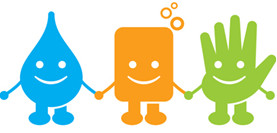
Health is the greatest gift you can give your child. Of course providing a germ-free environment is every parent’s wish, but more importantly educating them to protect themselves during their developing years should be the priority for parents. This sets the foundation for the rest of their lives!
Most bacteria and viruses are spread through the air in sneezes and coughs as well as through direct or indirect contact. Direct contact includes touching the stools of an infected person, mostly likely during diaper changes or toileting assists. Indirect contact refers to a person who has the bacteria or virus present on their hands, touching an object which then subsequently transmits the same bacteria or virus to anyone who touches it.
Steering clear of these bacteria and viruses is the best way to protect oneself. This is as simple as hand washing properly. These bacteria and viruses fear soap and water.
Washing your hands well after coughing, sneezing, using the bathroom, playing and before eating or preparing food is the best way to beat these baddies! Following the proper steps to wash for 15 seconds with warm water and soap is important.
On the go, if soap and water are not readily available, alcohol based hand rubs can be used. These hand rubs need to contain at least 60% alcohol to be effective. They do not eliminate all types of bacteria and viruses; hence they cannot be a substitute for proper handwashing. They also do not work if your hands are visibly dirty or greasy.
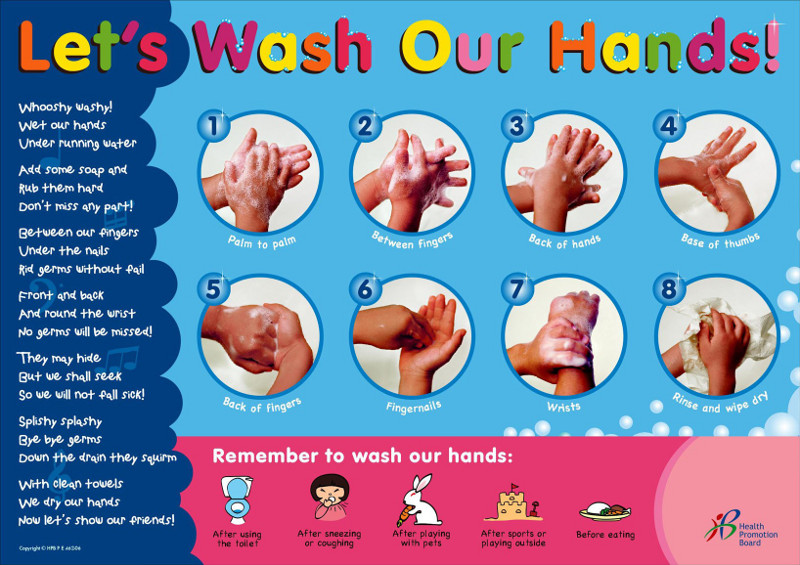
Another important practice is to cover your sneezes. Don’t just use your hands; using tissues for your sneezes and sniffles allows you to throw the germs into the trash! Remember to wash your hands as well!
How Can Parents Help Their Child Fight Against The Infection
Parents can equip their children to fight against infection by ensuring routine immunizations are kept up to date with the local government’s recommendations. Shots may be unpleasant but they help to build strong immunity keeping your child prepared to battle the baddies! Of course, you can also help to keep your child’s immunity strong by the following the advice below:
- Providing an healthy, balanced diet
- Toothbrushing twice per day
- Good exposure to sunshine and fresh air
- Good sleep hygiene
- Proper and effective handwashing
No one wants their little ones to fall ill due to an unhygienic environment or habits, so let’s strive together to keep our little ones strong!
By Dr Ian Ong, Paediatrician, SBCC Baby & Child Clinic
Practice Address:
SBCC Baby & Child Clinic (Ang Mo Kio)
Blk 721 Ang Mo Kio Ave 8 #01-2803/2805
Singapore 560721
Tel: 6456 8874
This article was first published in The New Age Parents e-magazine
If you find this article useful, do click Like and Share at the bottom of the post, thank you.
Want more comprehensive info? Check out our e-guides here.




































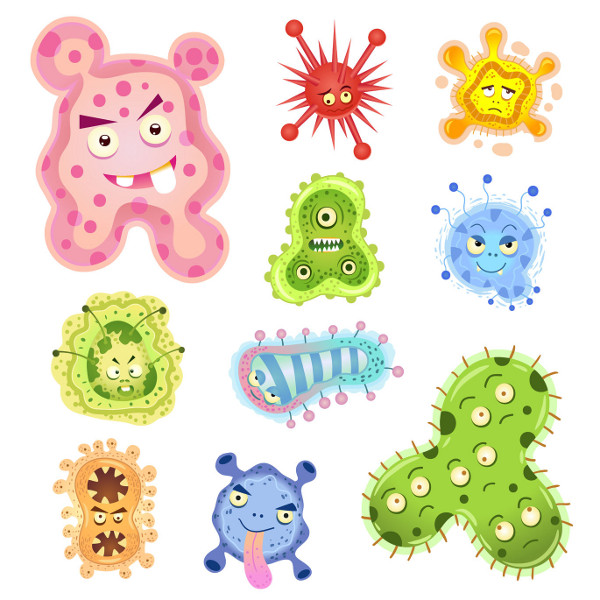
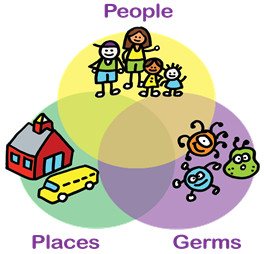


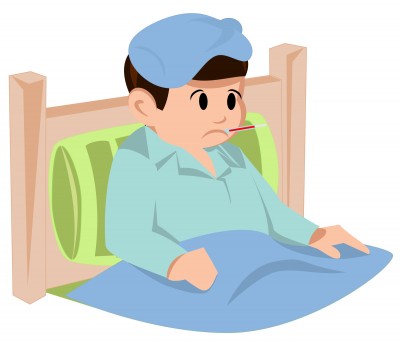
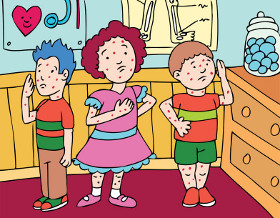
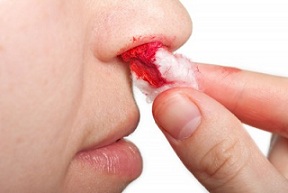





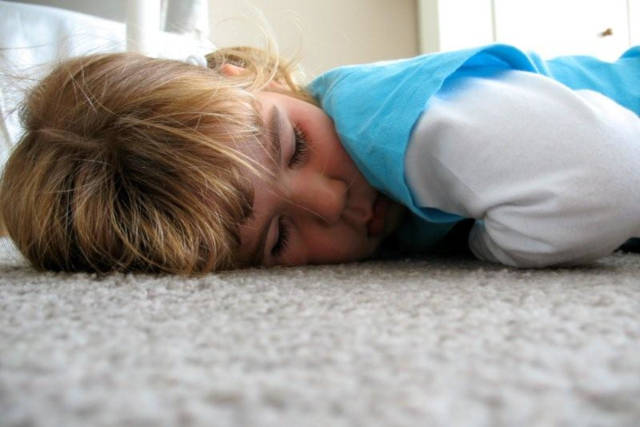










Leave a Comment: